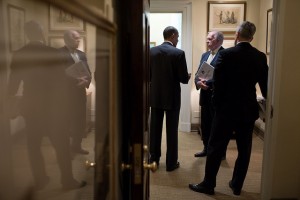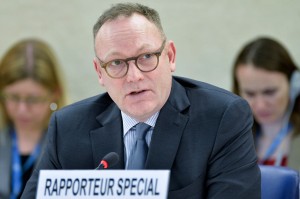Why Did Alfreda Bikowsky Invent a Story about al Qaeda Trash-Talking Us?
One curious revelation in the Torture Report is the specific stories invented by the torturers. One of those is the oft-repeated claim that Abu Zubaydah said detainees were only permitted to start talking after they had reached the limits of their ability to endure torture.
The CIA has consistently represented that Abu Zubaydah stated that the CIA’s enhanced interrogation techniques were necessary to gain his cooperation. For example, the CIA informed the OLC that:
As Zubaydah himself explained with respect to enhanced techniques,’brothers who are captured and interrogated are permitted by Allah to provide information when they believe they have ‘reached the limit of their ability to withhold it’ in the face of psychological and physical hardships.
As is described in greater detail in the full Committee Study, CIA records do not support the CIA representation that Abu Zubaydah made these statements.229 CIA records indicate that Abu Zubaydah maintained that he always intended to talk and never believed he could withhold information from interrogators.230 In February 2003, Abu Zubaydah told a CIA psychologist that he believed prior to his capture that every captured “brother” would talk in detention and that he told individuals at a terrorist training camp that “brothers should be able to expect that the organization will make adjustments to protect people and plans when someone with knowledge is captured.”231
229 While there no records of Abu Zubaydah making these statements, the deputy chief of ALEC Station, [redacted, Alfreda Bikowsky] told the Inspector General on July 17, 2003, that the “best information [the CIA] received on how to handle the [CIA] detainees came from a walk-in [a source [redacted] to volunteer information to the CIA] after the arrest of Abu Zubaydah. He told us we were underestimating Al-Qa’ida. The detainees were happy to be arrested by the U.S. because they got a big show trial. When they were turned over to [foreign governments], they were treated badly so they talked. Allah apparently allows you to talk if you feel threatened. The [CIA] detainees never counted on being detained by us outside the U.S. and being subjected to methods they never dreamed of.” See [redacted] Memorandum for the Record; subject: meeting with deputy chief, Counterterrorist Center ALEC Station; date: 17 July 2003.
More interesting still, CIA claimed that both Abu Zubaydah and Khalid Sheikh Mohammed said the US was weak and would not do what is necessary — purportedly meaning, torture — to combat al Qaeda.
The CIA representation that Abu Zubaydah “expressed [his] belief that the general US population was ‘weak,’ lacked resilience, and would be unable to ‘do what was necessary’ to prevent the terrorists from succeeding in their goals” is not supported by CIA records.1190
On August 30, 2006, a CIA officer from the CIA’s al-Qa’ida Plans and Organization Group wrote: “we have no records that ‘he declared that America was weak, and lacking in resilience and that our society did not have the will to ‘do what was necessary’ to prevent the terrorists from succeeding in their goals.'”1191 In a CIA Sametime communication that same day, a CIA ALEC Station officer wrote, “I can find no reference to AZ being deifant [sic] and declaring America weak… in fact everything I have read indicated he used a non deifiant [sic] resistance strategy.” In response, the chief of the [redacted] Department in CTC, [redacted], wrote: “I’ve certainly heard that said of AZ for years, but don’t know why….” The CIA ALEC Station officer replied, “probably a combo of[deputy chief of ALEC Station, [redacted, Alfreda Bikowsky] and [redacted]. I’ll leave it at that.” The chief of the Department completed the exchange, writing “yes, believe so… and agree, we shall pass over in silence.”1192
[snip]
Finally, the CIA attributed to KSM,along with Abu Zubaydah, the statement that “the general US population was ‘weak,’ lacked resilience, and would be unable to ‘do what was necessary’ to prevent the teiTorists from succeeding in their goals.”1265 There are no CIA operational or interrogation records to support the representation that KSM or Abu Zubaydah made these statements.
It seems to suggest both of these claims came from Alfreda Bikowsky, who was Deputy Chief of ALEC station in this period. Indeed, it suggests that others within CIA believed she (and someone else, whose name is redacted) made that up.
These aren’t the only oft-repeated stories the report says were made up (others include the claim that Abu Zubaydah wrote the al Qaeda manual, which was always so problematic it’s surprising it lasted this long).
But I find it interesting that Bikowsky, in particular, seems to have been inventing this kind of trash talking from al Qaeda. Trash talking that served to justify torture.



